Linux is a powerful and fully customizable operating system with an endless number of distributions that differ significantly from one another, offering complete personalization for all applications. Trust us — it gives MacOS and Windows a run for their money.
When choosing a Linux system, it’s common to pick a distribution, or “distro,” that compiles all the open-source features you want into one installation package. With the sheer number of Linux distros, it would take a long time for you to sift through them all to find your favorite, so to help you narrow down your search, we’ve compiled a list of the best distros that Linux has to offer.
Linux Mint 20.3

Linux Mint is now the leading Linux distribution, surpassing Ubuntu and all other distros to become the main competition against Windows and MacOS. When you look at Linux Mint’s features, like the LibreOffice productivity suite and the Timeshift snapshot restore function, that claim becomes easy to believe. Gamers can access more than 7,500 compatible titles on Steam, while graphic designers can use Blender, Gimp, and Inkscape. This distro has something for everyone.
Linux Mint 20.3 installs quickly and easily from a USB or blank DVD and offers full multimedia support from the get-go.
Mint makes an effort to straddle the line between stability and power. It’s not too resource-intensive, and it is conservative about updates, meaning there is little chance of installing a broken or unstable update that will require tedious system regressions. Mint users can also instantly play media from CDs, MP3s, and videos due to Linux’s better support for proprietary media files.
Linux Mint further mitigates headaches for users by using an update manager. By supporting many accessible desktop environments like Cinnamon (by far the most popular version of Linux Mint), Mate, and Xfce, as well as native support for a long list of applications, it lets users customize their update schedules to suit their needs.
Ubuntu 22.04
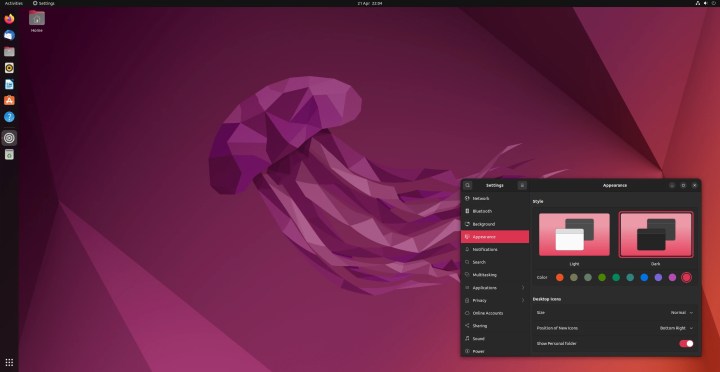
Ubuntu remains one of the most popular Linux distros in existence, even though it originally premiered more than a decade ago. It’s also the most widely used distro to date and even comes pre-installed on desktops and laptops manufactured by HP, Dell, and Acer as a Windows alternative. You can also grab the vanilla version of Ubuntu through Microsoft’s built-in store for Windows.
Every other year, Ubuntu provides annual developer canonical releases with long-term support (LTS), which means that users can enjoy five years of maintenance, security, and general updates without having to update their devices every few months. Typically, standard releases only get support for one year, with new versions released every six months. It’s worth noting though that Windows and MacOS users may take some time to learn the Ubuntu LTS GNOME 3 desktop, which is organized differently than either OS.
That said, Ubuntu has several flavors available — six to be exact — each with distinct programs, desktop environments, and features. For example, Ubuntu MATE (as in Yerba Mate tea) offers several critical applications, including Firefox, Thunderbird, LibreOffice, Rhythmbox, Shotwell, VLC, and Steam.
Based on the MATE desktop environment, this version provides its own set of tools on top of an intuitive and attractive presentation. Couple this with Ubuntu’s famous ease of use and installation, and you have an excellent OS for newcomers and Linux enthusiasts alike.
openSUSE’s LEAP
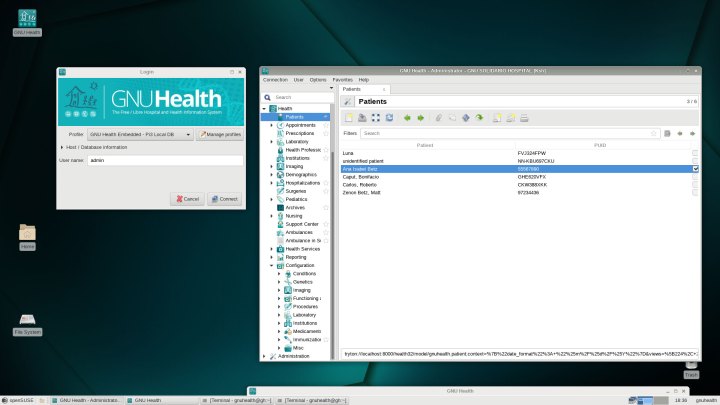
Also known as SUSE Linux and SUSE Linus Professional, openSUSE is another popular distro because of its interface flexibility and simple file installation. Sys-admins and developers will find this program particularly useful due to its rigorous security protocols, but the OS breaks down into the versions openSUSE Tumbleweed, openSUSE Leap, and openSUSE.
Tumbleweed is based on openSUSE’s main development codebase Factory and follows a rolling release model, meaning that users can download new packages as soon as they are reviewed in Factory. This release schedule means that Tumbleweed is a very convenient distro for daily PC users who need apps that update and function reliably.
For business owners who need a reliable Linux distro based on the SUSE Linux Enterprise source code, Leap is an excellent option. While updated versions of Leap are released on a roughly annual basis, each version comes with three years of support. For fans of customization, openSUSE Studio Express lets users create tailored versions of openSUSE, including your desktop, system settings, and software suite.
OpenSUSE uses a program called YaST, which is essentially a portal through which you can manage your computer and tweak settings to your liking. YaST makes it easy to install a large number of popular desktop interfaces — everything from KDE and LXDE to Gnome, Mate, and several others. These interfaces can even run simultaneously via YaST and switch to and from each other on the fly.
YaST also makes adding third-party applications a cinch with quick, one-click installations. Finally, openSUSE includes a feature called Tumbleweed, which updates your system and apps automatically, so your PC is always up to date. OpenSUSE is free to download, but there is a paid physical addition that includes 90-day installation support.
Fedora
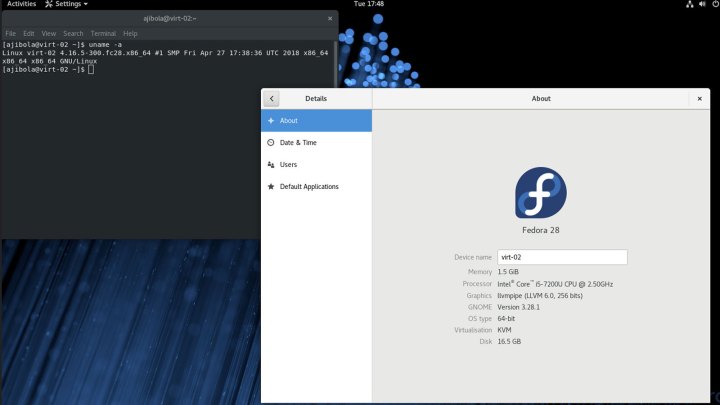
Don’t let the silly name of this Linux distribution fool you; it’s a flexible OS with three separate options depending on your needs. A workstation, server, and cloud-centric version are all available. Furthermore, the workstation version has excellent tools for specific needs, such as gaming, design, and even robotics, among others. The newly-released Fedora 36 primarily uses the GNOME 42 interface, but versions using different desktop environments are available.
The two main versions are Fedora Workstation and Fedora Server, though emerging editions of Fedora include IoT, Silverblue, and CoreOS. Fedora Workstation is built for anyone from students and novices to corporate professionals. It has impressive repositories and project hosting that allows users to share builds and code throughout the community with ease.
Fedora Server allows users to run software on cloud-based or physical Linux-based servers. Webmasters and sys-admins with knowledge of any OS can use the latest and greatest proprietary and open-source software. Those interested in a one-stop shop for their Linux networks can take advantage of DNS services, certificate integration, Windows domain integration, and identity management.
Fedora is known for having frequent version updates, sometimes weeks or months apart, integrating the latest programs and features available for Linux systems. Such a rapid update schedule makes the distro less reliable for those testing new products, due to the short cycle between versions and increased risk of unstable builds. However, it’s excellent for those who want to be on the leading edge of Linux development.
Debian
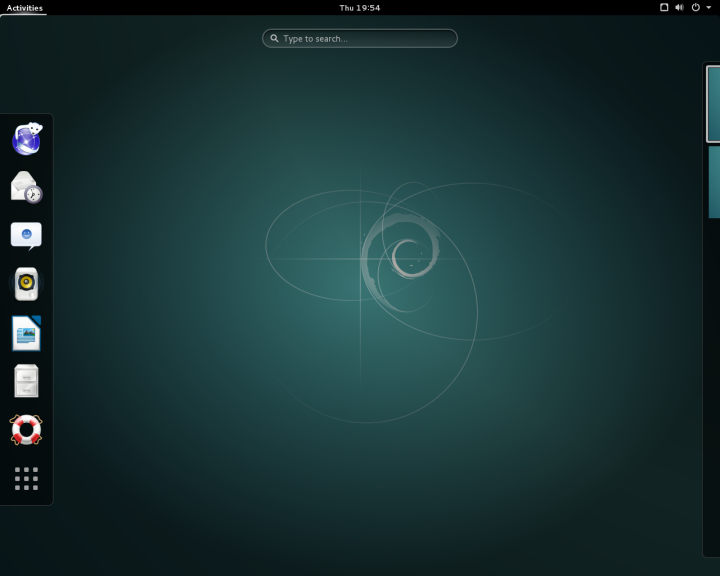
Debian is one of the longest-standing Linux distros, first released in 1996. Since then, it has served as the framework for many other distros — namely Ubuntu and Mint — which have subsequently gone on to inspire and inform numerous other distros. In terms of today’s distro development, Debian could be considered a beloved grandparent. The modern version of Debian offers over 59,000 packages with different desktop environments integrated into it, though Gnome is the primarily supported interface.
Debian is an excellent choice for both workstations and server systems. The workstation version comes with pre-installed programs like a Photoshop alternative, GIMP, Iceweasel internet browser, LibreOffice word processor, and VLC media player. Debian has three branches available—stable, testing, and unstable—depending on how much maintenance and testing you wish to put into your OS. Users can try Debian live before installing it; use a cloud image or download an installation image; purchase a DVD, CD, or USB with Debian installed; or buy a PC with Debian pre-installed.
Manjaro

Manjaro is based on another Linux distro called Arch. Both aim to provide bleeding-edge software without bogging down your PC, but Manjaro is more beginner-friendly. The parent program Arch is fine-tuned for advanced, tech-savvy users who can navigate the back end of Linux better than Mickey Mouse at Disney World, while Manjaro focuses on ease of use and friendliness for newcomers, without stripping all the good stuff that makes Arch great.
Moreover, Manjaro features the ability to automatically detect your system’s hardware and install the appropriate software, just like a Windows-based machine. Manjaro is backed by thousands of apps explicitly developed for this distro, including many popular alternatives to MS Office, and a community that will gladly help both newcomers and advanced users. Manjaro even offers four official flavors: The XFCE Edition, which is fast and lightweight; the Plasma Edition, which is the full-featured desktop version; and the Gnome Edition with a highly customizable user interface.
Manjaro also has several versions for ARM-based machines, including the Plasma and GNOME editions, as well as a MATE desktop edition and a terminal-only version named “Minimal.”
Arch Linux

For those who don’t mind a user interface that puts results over friendliness, Arch Linux is a well-regarded distro. Those who have older PCs or just want to keep their OS from bulking up their devices will benefit from the terminal, which lets users download and install customized builds and software packages around their Linux kernel. On the other hand, this freedom means that users will have to download any software and decide on all customizations themselves.
This distro prioritizes clean coding above everything else, which can make the advanced version intimidating for newer Linux users. However, Manjaro is based on the framework of Arch Linux and is much more forgiving for newbies than its inspiration. This particular distro will well serve users who want a bloat-free system with minimal clutter, but novices may wish to consider other options.
Solus
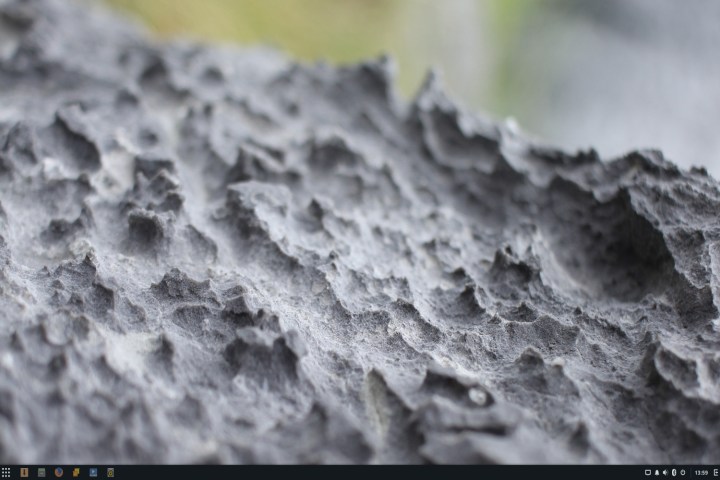
Solus is a Linux distro that launched at the end of 2015 and marketed itself as a versatile operating system for everyone. It was built from scratch with the general device user in mind and has gone on to become one of the more highly used distros in the last couple of years. It’s touted as easy to set up and functional on most devices. Not only can you choose between popular desktop interfaces (Budgie, Gnome, MATE, and Plasma), you can also take advantage of Firefox, Thunderbird, and other software you already use on your Windows-based machine. Solus allows you to manage data, from documents to music, in the Files section, and all apps can be accessed through the Software Center.
Creative Linux users can get so much out of using Solus, whether they’re animators, graphic designers, editors, or in a different field of content making, as Solus has a variety of uses. Developers can write backend web services or drivers and use a plethora of compilers, editors, version control systems, and programming languages, as well as connecting to virtualization and containerization tech.
Gamers will also enjoy Solus’ capabilities. With built-in support for a variety of gamepads and controllers, gamers will be able to enjoy their favorite devices in a plug-and-play environment. When it comes time to keep it professional, Solus provides LibreOffice, which includes productivity applications for home and professional users.
Zorin

Zorin is an excellent option if you’re looking to replace your Windows or macOS software with a new Linux operating system. Zorin relies on cues from the two major players to create an easy-to-use interface. A GUI can make it feel more familiar to many Windows and macOS users, making it even easier to learn.
Zorin’s built-in editing software will help you knock projects out. And an MS Office-compatible productivity suite facilitates collaboration. With Zorin, you can still use Wine to run other Windows applications. Or you can dual-boot your system if you want to run these apps in their native Windows 10 or macOS environments.
There’s a Zorin Lite edition for old computers. It’s a streamlined and scaled-down version of the distro and works on machines as old as 15 years.
The adjustment period when switching to Zorin is practically nonexistent for seasoned Windows and Mac users. Its features mock those of Linux, such as its fast-paced performance and abundance of security. You can also find additional software options at Zorin’s software store or Steam.
Editors’ Recommendations




